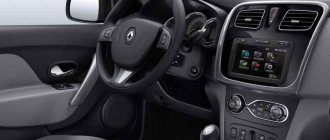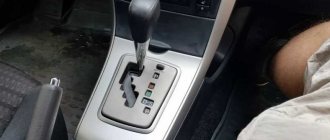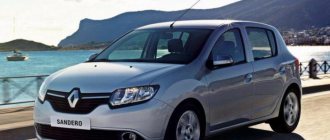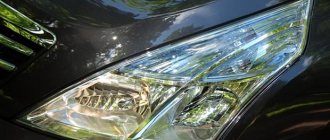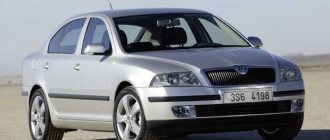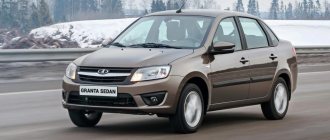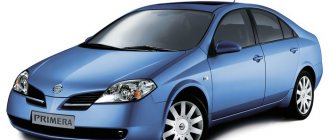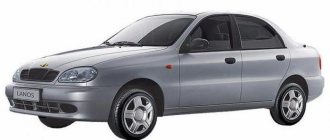Weaknesses of the BMW E39. We talk about the reliability of the “five”, its typical problems and shortcomings.
The production of BMW cars in the E39 body dates back to 1995-2003.
The fifth series cars are still in demand on the market, although it is impossible to find a car under 15 years old. High quality, reliability, excellent technical characteristics determine the demand for vehicles of this model. BMW cars in the E39 body have their own shortcomings and weak points, which most car service technicians are aware of. Purchasing quality spare parts is also not difficult. Regardless of the date of production and modification of the five, its main problem areas remain unchanged. Repairs are also carried out according to standard schemes.
Appearance
The model, in principle, is still quoted in modern times in terms of appearance, but only if the body is in good condition. There are not many differences from the civilian version, but they are present, and only a knowledgeable person can notice them.
The front part has acquired more massive reliefs on the hood. The moldings on the bumper also have a slightly different shape. The bumper itself is different; it has aggressive shapes and air intakes for cooling.
The side part did not receive anything new, except perhaps a nameplate on the molding. Here are the same extensions on the wheel arches. The threshold also received stamping. Even though there are no differences, the profile still looks great.
At the rear, the car has the same shaped lights and the same trunk lid. A small spoiler has appeared on this cover, which not only adds aggression, but also slightly improves aerodynamics. The rear bumper is different in shape; it has recesses for a massive diffuser, and already under it there are 4 exhaust pipes.
Body dimensions:
- length – 4785 mm;
- width – 1800 mm;
- height – 1440 mm;
- wheelbase – 2830 mm;
- ground clearance - 120 mm.
Problems in operating the BMW E39 power unit
For BMW E39 cars of different years of production, in-line power units with 6 cylinders were used. Some modifications had 8-cylinder engines. Only since 2000, the first power units with 4 cylinders on diesel engines with a capacity of 136 horsepower appeared on sale. The 520d modification was equipped with an internal combustion engine marked M47B20.
Except for diesel ones. E39 petrol “fives” were very popular. The cars were equipped with M52, M52TU, M54, M62 engines. The first of the engines is considered the most problematic. Gasoline with a high sulfur content damages the Nikasil unit. If repairs to a similar model are required, you need to find a specialized service. The masters of which know the solution to the problem.
M52 engines were installed on BMW until September 1998. Further into the series were modernized units labeled M52TU. Such internal combustion engines were equipped with a more reliable and durable cylinder block. An additional advantage of such internal combustion engines is the presence of Double Vanos brand phase shifters.
In 2000, another restyling of the BMW fifth series took place. M52 and M54 power units began to be installed on cars. Engines have become more reliable and wear-resistant. The developers have eliminated a large number of problems inherent in engines of early years of production. But such engines are not without weaknesses. Malfunctions concern the following components:
- when the mileage reaches 200 thousand kilometers, the piston rings become stuck;
- high operating temperatures of the power unit lead to drying out of the valve stem seals. The seals have to be changed;
- wear of valve seals leads to lubricant getting inside the cylinders, and accordingly the piston rings become coked;
- at high mileage, the car begins to consume oil at an increased rate;
- wear of the cylinders leads to the formation of scoring on the walls;
- With excessive wear, the timing chain stretches, and accordingly, the shoes and tensioner degrade;
- the formation of blockages inside hydraulic compensators leads to failure of the elements;
- Lubricant leaks can be detected either by oil seals. So through the valve cover gasket;
- the formation of cracks in the intake manifold body leads to loss of system tightness;
- failure of the cylinder head gasket leads to foaming of the oil; during short trips, condensation occurs as the engine does not reach the required temperature;
- in the exhaust gas ventilation system, the membrane may rupture and the pipes may become clogged;
- The Double Vanos system fails due to the drying out of the sealing rings; similar consequences are observed with wear of the bushings and oil leaks.
Certain modifications of the BMW fifth series were equipped with 8-cylinder engines; naturally aspirated gasoline engines labeled M62 were produced on the basis of M60 engines. The reliability of the internal combustion engine was not in doubt. One of the disadvantages of such power units is considered to be excessively high operating temperatures. During operation, the service life of elements made of rubber decreases.
On M62 engines, the valve stem seals often dry out. The lubricant flows down the valves into the combustion chambers and leads to gradual failure of the components. Another problem with 8-cylinder engines is the short service life of the oil seals. To eliminate the shortcomings, since 1998, phase shifters on camshafts began to be installed on such power units.
Chassis
Owners note as a feature of the model the low ground clearance and the feature of the rear suspension “steering” on turns, which gives pleasure to the owner.
As for the suspension design, in the E39 many solutions can be considered standard, in particular, the implementation of some parts from light metal alloys. But the sporty nature of the car is directly reflected in the service life of the parts. And often it is problems with the suspension and its impending expensive repairs that become the reason for the sale of this BMW. The front suspension requires increased attention from the owner. With careless driving, aluminum levers (and there are 2 of them per wheel) last only 15-30 thousand km. But with careful and careful treatment of the car, the service life increases significantly and reaches 70-80 thousand km. Silent blocks wear out earlier, but they also change on their own.
The rear suspension in the E39 is complex; its problem is the wishbones and camber rods. A typical story with stabilizer struts and bushings - they are used as consumables. Trouble occurs when the silent block in the large H-shaped lever wears out.
The model's brakes are not satisfactory. Sometimes the electronics are strange in terms of the ABS sensor or control unit, but this mainly applies to models before 1999. When choosing a used five, you need to pay attention to the condition of the steering rack. The presence of play and leakage can have an unpleasant effect on the budget, because the entire part will have to be replaced or rebuilt. Experts note that a feature of the BMW E39 has always been its not the most durable steering rack. Therefore, when choosing a used five, pay close attention to the presence of play and leaks. The average lifespan of a part is 80 thousand kilometers, then repair or expensive replacement. It is noteworthy that for BMW the difference between original spare parts, even used ones, and new but analog ones, in terms of operation, reaches 2-3 times, not in favor of the latter. And the five in this sense is no exception.
Problems of BMW E39 diesel power units
The engines of BMW E39 cars running on diesel fuel are reliable and unpretentious. Breakdowns are recorded extremely rarely. A power unit with 4 working cylinders in some modifications was installed on the BMW fifth series and had certain disadvantages. The M47V20 engine is characterized by the presence of a VP44 injection pump fuel system, the operation of which may have certain problems.
A four-cylinder diesel unit can also cause problems due to crankshaft failure. Such situations are recorded while driving and in the mode of starting the engine in tow. A typical problem with engines is the breaking off of the swirl flaps and their entry into the combustion chambers. The cylinder head, pistons and other components fail.
M57 power units with installed Common Rail injection system, operating instructions for equipment. Swirl flaps are excluded from the design; the motor has practically no other weak points. The Garrett variable geometry turbine installed on the power unit operates regularly for 400 thousand kilometers. A similar motor was produced between 1998 and 2004. The working volume of the internal combustion engine can be 2.5 or 3 liters.
Malfunctions of the BMW E39 transmission
BMW cars with automatic and manual transmissions were in equal demand on the market. Models with manual transmission are considered more reliable. The dual-mass flywheel can cause problems. It is best to repair it if it breaks than to replace the unit with a single-mass one.
BMW E39 vehicles may include an automatic transmission. The five-speed gearbox was supplied in two modifications. The German automatic transmission ZF 5HP24 is identical in characteristics to the American GM5L40E, but it processes commands a little faster. Due to a well-thought-out design and coordinated work in tandem with the power unit, any of the automatic transmissions operate for at least 250 thousand kilometers without major repairs.
For engines with 8 cylinders, the clutch pack fails first, then the clutch bearings break. For BMW E39 vehicles with an automatic transmission installed, one of the problems is the wear of the torque converter locking module linings. Dust gets into the oil, which affects the speed of repair. At the same time, the cost of restoring the box is affordable.
Another weak point is the possible failure of the intermediate support bearing of the propeller shaft. The rubber coupling at the point where the differential and cardan are connected may fail. The transmission causes virtually no other problems.
Specifications
| Type | Volume | Power | Torque | Overclocking | Maximum speed | Number of cylinders |
| Petrol | 4.9 l | 400 hp | 500 H*m | 5.3 sec. | 250 km/h | V8 |
More details
This model has an excellent engine that remains in the hearts of many fans. The S62 petrol engine with a volume of 4.9 liters is installed here. This is a naturally aspirated V8 that produces 400 horsepower and 500 H*m of torque.
The injection system of the BMW M5 E39 is multi-point, there is an 8-throttle intake, that is, a separate one for each cylinder. It cools completely, two strokes with two mass air flow sensors that control the amount of air, plus there is a cold air intake.
The engine is paired with a Getrag type D 6-speed manual transmission. The car is of course rear-wheel drive. All this allows the sedan to accelerate to hundreds in 5.3 seconds, and the maximum speed is limited to 250 km/h. Of course, its consumption is high - 21 liters of 98-octane gasoline at least in the city, on the highway it will take 10 liters.
Now regarding the chassis, it uses a fully independent aluminum suspension. There is a MacPherson strut at the front and a multi-link system at the rear. The car handles well, but comfort is unfortunately limited.
The model will brake using powerful disc brakes that are ventilated at the front. The braking system is equipped with ABS and ESP functions.
Damage to suspension and steering
Suspension faults on BMW and other vehicle brands can happen at any time. Owners of German-made cars must solve problems not as they arise, but in advance. In this case, knocks, play and other damage can be eliminated with little effort and means. Suspension diagnostics are carried out twice a year. This is quite enough to notice and eliminate defects in time.
One of the sore spots of the BMW E39 chassis is the wear of the silent blocks. You won't be able to install them yourself, as special tools are required to press them into the aluminum arm. At the same time, the cost of replacing the entire unit with an original module will be high.
The H-shaped rear suspension arm can cause problems. Due to the design features, wear of silent blocks leads to breaking of seats. If the silent blocks are not replaced in time, the lever assembly will soon need to be replaced. Original parts are expensive. Therefore, you can purchase high-quality analogues or used spare parts in good condition.
Chassis and steering
The suspension of the BMW 5 E39 is clearly designed for the German autobahn; in our harsh realities, the service life of both the front and rear suspensions does not last very long. Some believe that this is due to the aluminum suspension, but the metal has nothing to do with it. Aluminum is used to reduce weight, and does not affect the suspension life, but the cost. Silent blocks, ball joints, shock absorbers and stabilizer struts fail. The silent blocks are replaced separately, but the ball blocks are replaced only with the lever together, but they “go” for about 100,000 km. Stabilizer struts are almost consumables; you can safely take them in reserve, since they will have to be changed every 20-30 thousand km. On the E39 with R6 and V8 engines, the front suspension has different arms, shock absorbers and steering knuckles; they are not interchangeable, and on versions with eight cylinders the chassis is more durable.
On versions with V8, the steering is also much more reliable; reliable worm gearboxes were installed in conjunction with such heavy engines. And on the R6 they installed ordinary steering racks, which are not particularly reliable. For some time, the knock can be removed by adjustment, then restoration or replacement. There are two types of fluid in the steering system; mixing leads to leakage and “death” of the power steering.
You won't be able to forget about the rear suspension either. You can start with the stabilizer struts, just like the front. In second place in terms of replacement frequency are “floating” silent blocks, there are 4 of them with an average mileage of 50,000 km (Chinese-Polish ones no more than 20,0000 km). The rear suspension arms come only as assembled parts. The front wheel bearings, by the way, are also replaced only together with the hub.
When servicing the chassis of the BMW 5 E39, it is recommended not to delay the elimination of individual breakdowns or knocks; it is better to eliminate problems gradually than to end up with a car whose suspension is completely “killed”. One broken silent block can speed up the destruction of the remaining suspension elements several times.
Body repair BMW E39
The appearance of corrosion and rust spots on the body of the BMW E39 is a known problem. The bottom sections are least resistant to dirt and moisture. Thresholds, door edges, rear wheel arches. If you take timely measures and eliminate the first signs of corrosion, the body will last a long time without major repairs.
Electrical breakdowns of the BMW fifth series
The presence of water-cooled generators is typical for BMW E39 engines. The service life of this unit ranges from 150 to 200 thousand kilometers. If the generator fails, the best option is to purchase a used unit. Repairs will cost significantly more. Problems are also recorded with the ABS module. Due to the high temperature, the unit may fail at the most inopportune moment.
The BMW dashboard is equipped with pixel screens. Gradually, the elements of the monitor fade and become difficult to read. There are no other problems with the BMW fifth series electrics. Moreover, most units are repairable.
